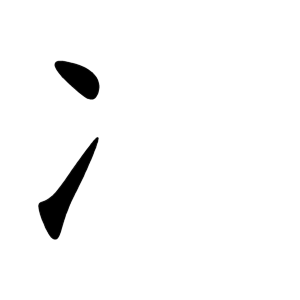冫
- ice, oil;
- to congeal/freeze;
Etymology
It is a pictograph, modeled after the appearance of frozen ice, representing the form of ice in its solid state.
Usage in Korean
When used as a radical, most characters with 冫 are related to ice or cold. Representative examples include:
凜 (림, “freezing cold”)
冬 (동, “winter”)
凍 (동, “to freeze”)
凝 (응, “to congeal”)
冷 (랭, “cold”)
An exception is 泌 (피, “to secrete/tears”), which, despite being related to liquids, uses 冫 (ice radical) instead of the more expected 氵 (three-dots water radical).
Although its Korean reading (훈음) is "얼음 빙" (ice bing), when used as a radical, it is referred to as 이수변 (二水邊), meaning “two-dot water side radical.”
Additional notes
Although 冫 usually appears on the left side (radical position) of Chinese characters, it is uniquely positioned at the bottom in the character 冬 (dong, “winter”).
Characters with 冫
- 戈一 (IM)
- ⿱ 丶 ㇀
